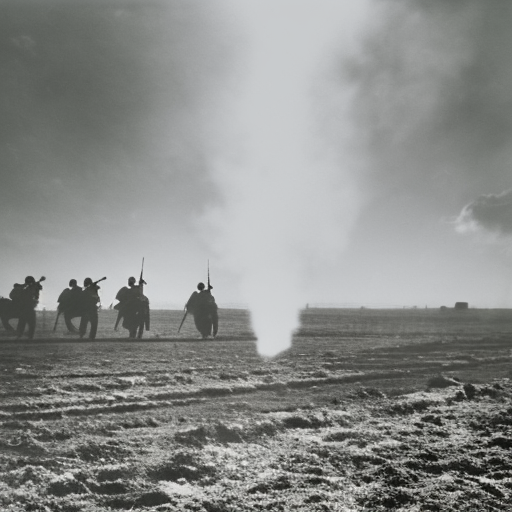Battle of the Somme: A Devastating World War I Offensive
The Battle of the Somme was a major offensive fought during World War I between British and French forces against German troops. It took place from July 1 to November 18, 1916, along a 15-mile front near the River Somme in northern France. The battle was one of the bloodiest in history, resulting in heavy casualties on both sides and limited territorial gains.
Background:
By 1916, the war on the Western Front had reached a stalemate. The British and French armies sought to break through German lines and relieve pressure on their Russian allies in the east. The Somme region was chosen as the site for the offensive due to its strategic importance and the belief that a breakthrough was possible.
Preparations:
Extensive preparations were made for the battle. The British and French armies amassed a large number of troops, artillery, and ammunition. A week-long artillery bombardment was planned to destroy German defenses and barbed wire entanglements. However, the effectiveness of the bombardment was limited, as the Germans had dug deep trenches and reinforced their positions.
The Battle:
The battle began on July 1, 1916, with a massive artillery barrage. British and French troops advanced across no man’s land towards the German lines. However, the Germans had survived the bombardment in their deep trenches and were able to repel the initial assault. The attackers suffered heavy casualties, with over 19,000 British soldiers killed on the first day alone, making it the bloodiest day in British military history.
Despite the initial setbacks, the offensive continued throughout the summer and into the autumn. Both sides suffered heavy casualties as the battle raged on. The British introduced new tactics, such as the use of tanks, to break through the German lines. However, the tanks were unreliable and had limited impact on the outcome of the battle.
The battle finally came to an end on November 18, 1916, after more than four months of intense fighting. The British and French forces had made some territorial gains, but the overall objective of a breakthrough had not been achieved. The battle resulted in over 1 million casualties, with the British and French suffering around 620,000 and the Germans around 450,000.
Legacy:
The Battle of the Somme had a profound impact on the war and the people involved. It highlighted the horrors of trench warfare and the immense human cost of the conflict. The battle also marked a turning point in military tactics, as it demonstrated the limitations of frontal assaults against well-fortified positions.
The Battle of the Somme is often remembered as a symbol of the futility and senseless loss of life in World War I. It remains one of the most devastating battles in history and serves as a reminder of the sacrifices made by soldiers on both sides.
In conclusion, the Battle of the Somme was a major offensive during World War I that resulted in heavy casualties and limited territorial gains. Despite extensive preparations and the introduction of new tactics, the British and French forces were unable to achieve a breakthrough. The battle highlighted the horrors of trench warfare and the immense human cost of the conflict. It remains a significant event in history, symbolizing the futility of war and the sacrifices made by soldiers.












